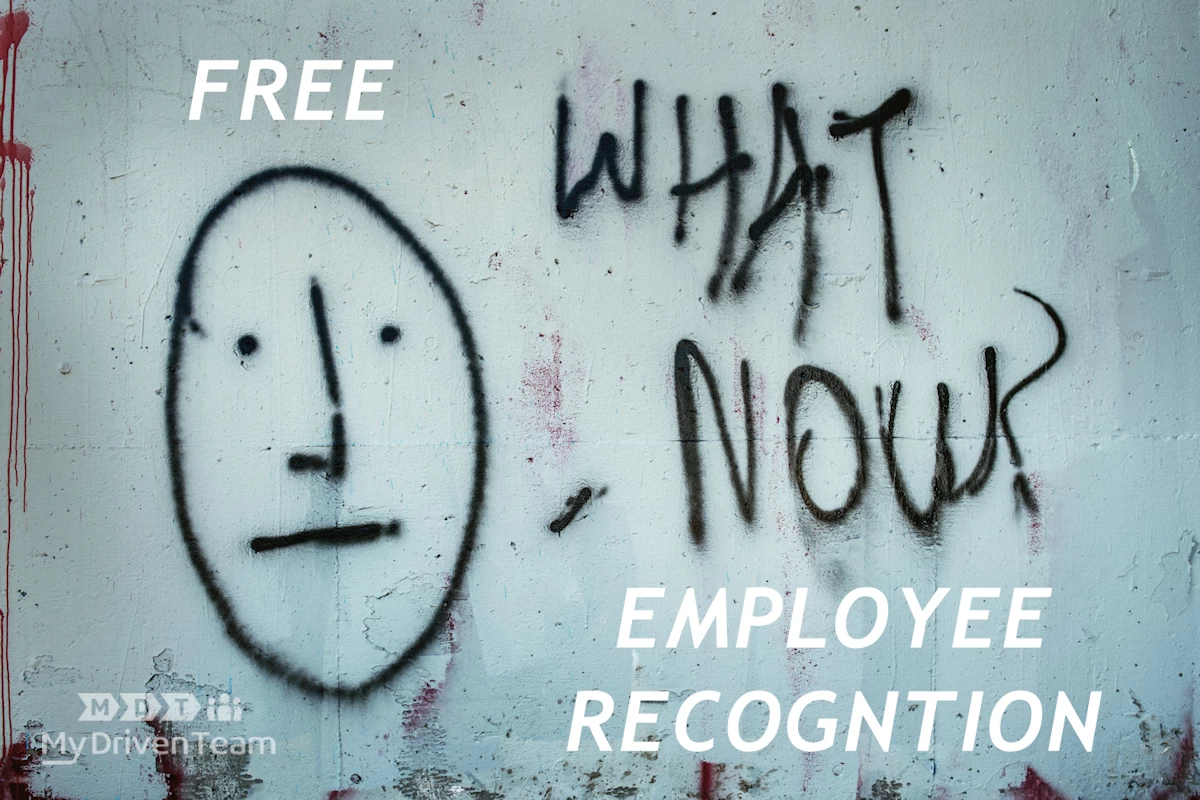
Getting your point across to people isn’t always about what you are saying, but more about how you are presenting the information. Think about it like telling a better story, so you can grab peoples attention, keep that attention, and influence the way they think and ultimately act…
One of the most important qualities of a leader is how well they help other people change behaviors. Leaders literally “lead” people in a direction they wouldn’t have been moving in without them. And since change is so difficult, any tool or skill that can help us “lead” people to these better behaviors is worth exploring (especially if it’s free)! This is one of those things…
I don’t know about you, but I sometimes find that my presentations are lacking. Depending on the subject, I often forget to even try and tell a story. For my personality type, I go for the head most of the time. And since I’m not chasing Thanos, this is not helping me get my point across!
In Todd Cherches book, Visual Leadership, he uses a framework as a powerful checklist to help process information. By using this checklist, you can make sure that you are not missing a critical piece for any presentation, pitch, or important communication:
- Head – Logic or facts that support the overall intent
- Heart – Emotion or feeling that support the overall intent
- Hands – Teamwork / collaboration needed to support the overall intent
- Feet – Action need to support the overall intent
Memorable Interactions Having Lasting Impact – Here’s an example:
What is the most significant life changing event you have ever experienced? Take a minute and think about it…
For me, it was when my Dad was arrested when I was 18 years old. I was a Senior in High School and went from having a fairly stable home life to darn near complete homelessness. It was shocking! I had a few bucks in my savings account and my 1965 Ford Falcon (which regularly broke down). All of that said, it was heart wrenching to see my father get carted away in hand cuffs by DEA agents. I cried myself to sleep so many nights. Eventually though, it triggered something in me. I had no choice, but to dust myself off and get to work!
I’m pretty sure that if that hadn’t happened, I would have remained the rudderless teenager that frequently fought with his brother and worked at Burger King. Instead, I became determined not to end up like Dad. With the help of my Grandparents and my Aunt & Uncle, I headed to college (in this case a local Technical School). They offered me much needed moral support (and help with rent). Once I graduated, I moved around for a few jobs and eventually found a career. I found my wife, God, and was blessed with a beautiful family.
The moral to this story is that adversity is a powerful force and if viewed correctly, it can help you be better. When we face adversity, we have a choice to run and hide or face it and let it be a stepping stone. I chose the stepping stone…”what will you do?”
Now, what does that have to do with anything? It’s an example of a story that I sometimes tell to get peoples attention…
Oftentimes when I tell people this story, I leave out details. My natural communication style (ENTJ – Meyer’s Briggs), is to go straight to the facts. 18 years old. Dad arrested. Worked my butt off. That’s about all I tend to say. However, when I add in details about crying myself to sleep, I add in the heart. When I talk about my Grandparents & Aunt and Uncle, I add in collaboration. And when I add in the moral to the story and the question at the end, it adds action.
You Can’t Ignore Communication Styles
We all have different communication patterns that we prefer. That means some of us will listen to certain people more than others. We will tend to get frustrated with some more than others. So, when you are trying to engage with people, having the ability to present information with multiple elements (head, heart, hands, and feet) is quite a valuable skill!
Think of presentation as story telling and giving someone a map to your way of thinking.
My point here is…don’t under estimate the importance of one or more of these elements. If you forget the heart, you lose a chunk of the audience. If you forget the facts, you lose a different chunk of the audience and so on. If you are able to pull all of this together (succinctly), it can really help you capture a person’s attention in a way that becomes more memorable.
What if the audience is only one person?
This is really important! If you have a broader audience or an audience that you are unfamiliar with, then you must cater to multiple communication styles. However, if you know your audience (which I highly recommend), then your story must take into consideration their preferences. Telling a story that focuses too much on the heart with someone that is mainly concerned about the facts, can be dangerous. In this case, you wouldn’t want to forget about the heart, but you would want to the facts to be strong and ever present to the end.
Here’s A Work Example
Let’s say you want to talk your team into trying a new behavior at work (and you are not the boss). For example, you want to try and convince them to try a stand-up meeting at the beginning of the day. You might say, “hey let’s have a stand-up meeting to get the day going?”. This might be enough, but it’s more likely that everyone will roll their eyes and goes back to work…
However, you could say…”Hey! I was talking to a friend this weekend about a routine that his team does that sounds like a game changer. This routine made their days easier, helped them to appreciate each other and help each other more (they even broke a quarterly record). This helped them get an award for most productive team! Can we create a daily alignment routine to help each us do that? I’d be happy to lead the charge…”
I’ll admit, this is only a minor adjustment, but hopefully you see that by saying it one way, there is a much better chance that the answer is yes! It’s not perfect, but your team-mates or your boss will be much more likely to remember you saying the second version, compared to the first, which is just forgettable.
Oftentimes, I talk to people that have tried to express something they want, but the team just didn’t hear them. The person typically feels upset and demoralized because their idea was ignored. Was it because it was a bad idea, or was it because the presentation was not delivered well?
Practice Makes Perfect
One thing is for sure, repetition facilitates retention! I’ll be the first to admit, that I forget about this framework sometimes. And even when I do remember, I’m not always good at it. Hey, it’s new for me too!
The one thing I’ve noticed is that the more I use it, the better I’m getting at it. I can only imagine that the better I get at it, speed will come as well. So, instead of me just using it for big presentations, I can use it more “on-the-fly”. Like any other skill, this will me hone my craft. Whether I’m talking my daughter into helping me with a project around the house or a CEO into investing in a new training curriculum.
Don’t Just Keep Repeating Yourself
While I’ve run into plenty of people that are frustrated because the one time they presented an idea it wasn’t heard, I’ve also ran into the opposite. You know these people because they just keep presenting the same idea over and over again trying to wear everyone down. It may still be a good idea, but repeating the same thing over and over again and expecting a different result is not productive.
I appreciate the tenacity of this approach, so I would suggest that the presentation be tweaked a bit to see if it changes the reaction. Think of it as a series of small experiments. Use the framework to emphasize one part of the presentation over another. You might even find that by using the framework, the idea itself might need to change a bit.
Eventually, between the tweaks and the reaction of the audience you speaking with, you should be able to find a way to move forward. Just keep in mind that a critical piece to this is listening to the audience.
Summary
The head, heart, hands, and feet framework is an easy way to level up your communication no matter what your role is and no matter what point you are trying to make!


